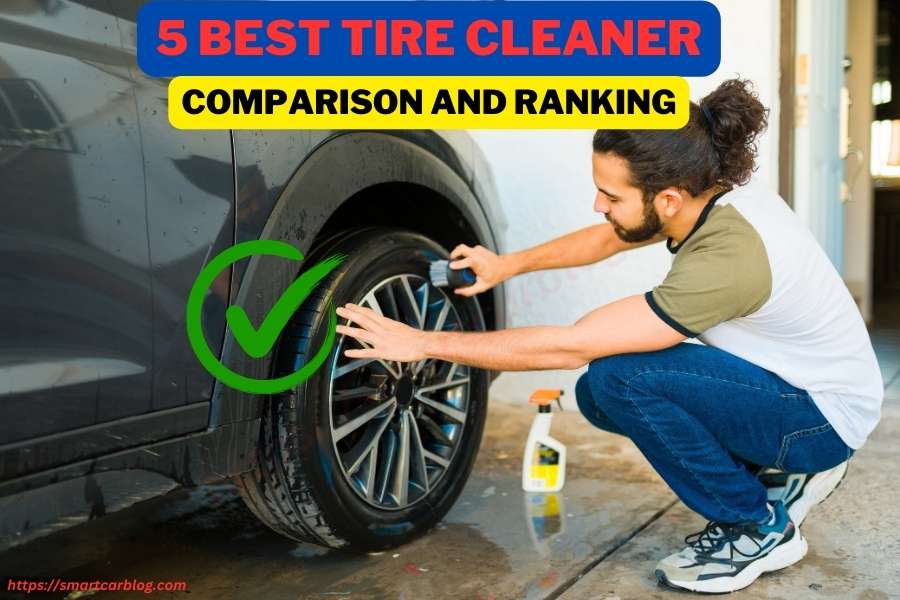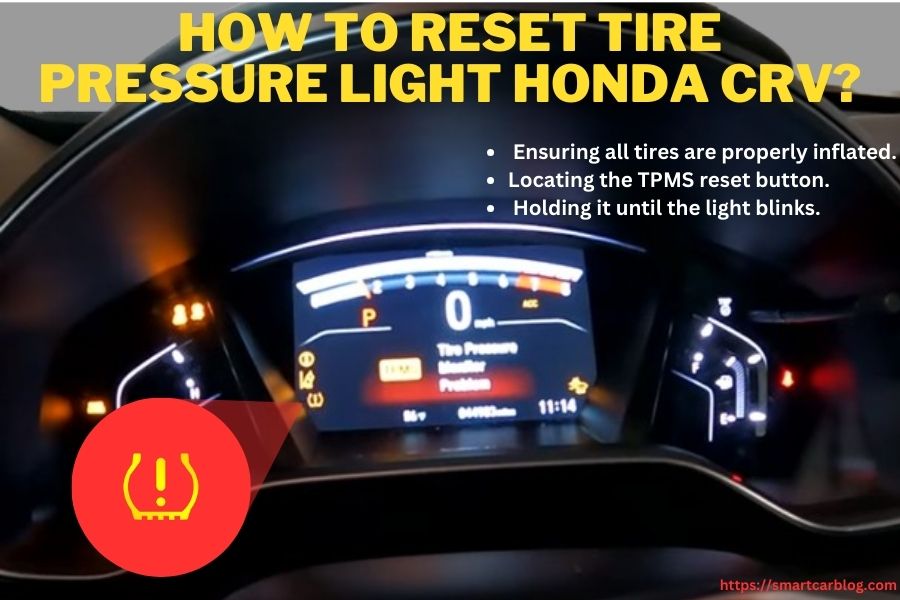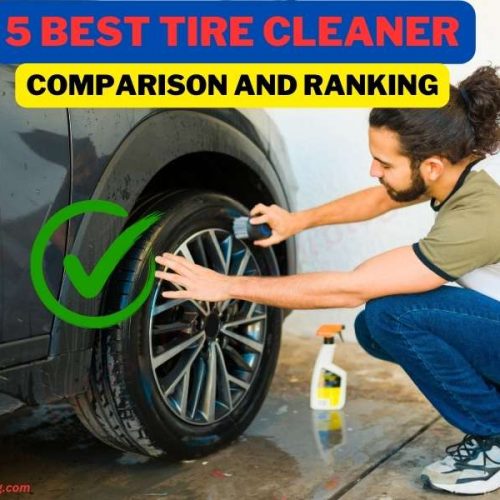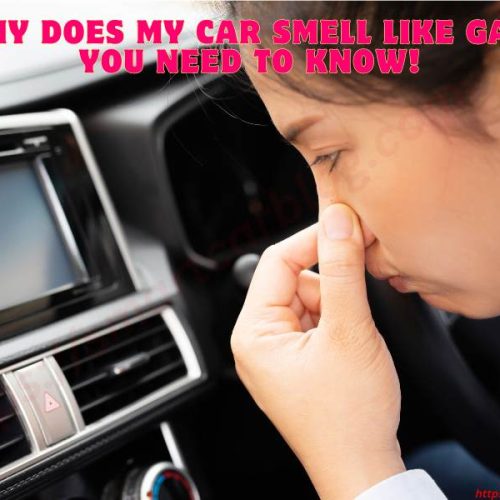Have you ever found yourself glancing at your dashboard and spotting an unfamiliar glowing symbol? And are you worried about How To Reset Tire Pressure Light Honda CRV?
For Honda CRV owners, one common alert is the tire pressure light, a small yet significant indicator. This light isn’t just another fancy addition to your dashboard; it plays a pivotal role in ensuring your safety on the road. Imagine cruising down a highway, and unbeknownst to you, one of your tires is deflating. The situation can swiftly escalate from a smooth drive to a potentially hazardous one. That’s where the tire pressure light comes into play, giving you a heads-up before things go south.
However, the benefits aren’t limited to just warnings. Maintaining the correct tire pressure in your Honda CRV is crucial for several reasons. It not only guarantees optimal fuel efficiency but also ensures that your tires wear evenly, adding longevity to their life. Moreover, with the right tire pressure, your car handles better, brakes efficiently, and provides a smoother ride overall. So, the next time you see that tire pressure light flash, remember it’s not just about a little air in the tires; it’s about your safety, comfort, and vehicle health. Are you curious about how to reset the tire pressure light on a Honda CRV? Stick around as we delve deeper into the intricacies of these essential features.
Table of Contents
ToggleWhat is the Tire Pressure Monitoring System (TPMS)?
In the vast array of automotive technologies, the Tire Pressure Monitoring System, better known as TPMS, stands out as a sentinel for safety. At its core, TPMS is an integrated system designed to continuously monitor the air pressure inside the tires of a vehicle. Through specialized sensors, either located within the tire or on the valve stem, it vigilantly tracks pressure levels and ensures they remain within the recommended range set by the manufacturer.
When a tire’s pressure drops below or rises above these specified boundaries, TPMS takes immediate action. It triggers a warning light on the vehicle’s dashboard, notifying the driver of the irregularity. This timely alert is more than just a convenience; it’s a call to action, urging drivers to rectify the pressure discrepancy, thus averting potential risks like decreased fuel efficiency, uneven tire wear, or even a sudden blowout.
The inclusion of TPMS in modern vehicles underscores the automotive industry’s commitment to enhancing road safety. For anyone behind the wheel, this system serves as a reliable co-pilot, ensuring that the journey remains not just smooth but safe from the ground up. As tire health directly impacts vehicle performance and passenger safety, TPMS’s role in timely detection and alert becomes invaluable, making every drive a little more secure.
Definition and Functionality of TPMS
The Tire Pressure Monitoring System, commonly abbreviated as TPMS, is an advanced vehicle safety system designed to keep a vigilant eye on tire pressure. Operating via sensors fitted inside the tires, this system continuously monitors the air pressure in real-time. When the pressure in any of the tires drops below or exceeds the recommended level, TPMS instantly alerts the driver by illuminating a warning light on the dashboard. This preemptive warning system ensures that you don’t get caught off guard with a deflated or over-inflated tire, allowing you to take corrective action before a potential mishap.
Role of TPMS in Honda CRV Safety
For Honda CRV drivers, the TPMS is more than just a convenient feature; it’s a critical safety tool. Roads are unpredictable; conditions vary, and the surfaces can sometimes be harsh. Under such circumstances, tires are the first line of defense, absorbing shocks, offering grip, and ensuring a stable drive. With TPMS in play, the Honda CRV ensures that this line of defense is always in its prime condition.
By notifying drivers of discrepancies in tire pressure, the TPMS in Honda CRV significantly reduces the risks of tire-related accidents, promoting safer drives. From sudden blowouts on highways to reduced grip on wet roads due to under-inflation, TPMS works tirelessly to prevent these scenarios, reinforcing Honda’s commitment to driver safety.
Why Does the Tire Pressure Light Come On?
Navigating the array of lights on your dashboard can sometimes be a puzzle. Among them, the tire pressure light stands out, often leading to a series of questions: Why did it light up? Is there a significant problem? Understanding the factors that can activate this light is crucial for every driver. Let’s dive into some of the primary reasons:
Natural Causes Affecting Tire Pressure
Air, by its nature, expands when heated and contracts when cooled. This principle applies to the air inside your tires, too. For instance, after a long drive, the friction between the tires and the road generates heat, potentially causing a slight increase in tire pressure. Conversely, if a vehicle remains stationary during a cool night, the tire pressure might drop by morning. Such natural fluctuations can sometimes trigger the tire pressure light, even if there’s no severe issue at hand.
Tire Puncture or Damage
One of the more apparent reasons for the tire pressure light to come on is a puncture or damage to the tire. Even a small nail or shard of glass can cause a slow leak, leading to a gradual loss of pressure. Over time, if unnoticed, this can compromise not just the tire’s integrity but also the vehicle’s performance and safety. The TPMS, sensing this decline in pressure, activates the warning light, signaling the driver to inspect the tires.
Seasonal Temperature Changes
Seasonal transitions, especially from warm to cold months, can play a significant role in tire pressure variations. As temperatures drop during fall and winter, so can the pressure within your tires. It’s not uncommon for drivers to notice their tire pressure light illuminating on the first few chilly mornings of the season. A general rule of thumb: For every 10°F change in temperature, tire pressure can change by about 1 PSI. Therefore, as seasons shift, it’s essential to regularly check and adjust tire pressures to ensure they align with manufacturer recommendations.
Note: while the tire pressure light’s activation might seem alarming, it’s often the car’s way of communicating essential information to the driver. By understanding the causes behind it and taking prompt action, one can ensure a safer and more efficient driving experience.
How to Check Your Tire Pressure
Ensuring the right tire pressure isn’t just about vehicle performance—it’s a matter of safety. With the right tools and a systematic approach, you can effortlessly ensure your tires are at their optimal pressure. Here’s a comprehensive guide to walk you through the process:
Tools Needed
👉 Tire Pressure Gauge: A quintessential tool for any vehicle owner, the tire pressure gauge provides an accurate reading of the air pressure inside your tires. While there are several types available, from traditional stick gauges to digital ones, it’s essential to choose one that’s easy to read and calibrated for precision.
👉 Portable Air Compressor: While not strictly necessary for just checking the pressure, having a portable air compressor can be invaluable if you find your tires need to be inflated. Many modern compressors are compact, easy to use, and can be powered using your car’s 12V outlet. Investing in one ensures you’re always on time, especially during long road trips.
Steps to Accurately Check Pressure
⇒ Ensure Tires are Cold: For the most accurate reading, it’s best to check the tire pressure when they are cold, typically after the car has been stationary for a few hours or hasn’t been driven more than a mile.
⇒ Locate Manufacturer’s Recommended Pressure: This information is usually found on a sticker inside the driver’s door jamb or in the vehicle’s manual. Remember, the recommended pressure can vary between the front and rear tires.
⇒ Remove the Tire Valve Cap: Located on the tire itself, this small-cap protects the valve from dust and debris. Twist it counterclockwise to remove it.
⇒ Place the Gauge on the Valve Stem: Push the tire pressure gauge onto the valve stem. If you hear a hissing sound, push harder to ensure an air-tight seal.
⇒ Read the Pressure: If you’re using a standard gauge, a stick will pop out from the bottom, with numbers indicating the psi. For digital gauges, the reading will be displayed on the screen.
⇒ Adjust Pressure if Needed: If the reading indicates that the tire is underinflated, use the portable air compressor to add air. If overinflated, gently press the center of the valve to release some air.
⇒ Re-check the Pressure: After adjusting, measure the pressure again to ensure it aligns with the manufacturer’s recommendation.
⇒ Replace the Valve Cap: Once satisfied, ensure you tightly screw the valve cap back on.
Regularly checking and maintaining the right tire pressure not only ensures a smooth ride but also optimizes fuel efficiency, reduces tire wear, and, most importantly, keeps you safe on the road.
Benefits of Maintaining Correct Tire Pressure
Tire pressure isn’t merely a figure listed in your car manual; it’s the pulse of your vehicle’s performance and safety. Ensuring that this pressure stays within the recommended range yields a plethora of benefits, not just for your vehicle but also for your wallet and well-being. Let’s explore these advantages in depth:
Improving Fuel Efficiency
One of the first casualties of incorrect tire pressure is your vehicle’s fuel efficiency. When tires are underinflated, they have a larger surface area in contact with the road. This increased friction means your vehicle has to work harder, burning more fuel in the process. By maintaining the correct tire pressure, you ensure minimal resistance, allowing your car to glide smoothly and consume less fuel. In essence, the right tire pressure translates to fewer visits to the gas station, saving you money in the long run.
Ensuring Longevity of the Tires
Tires are undeniably among the pricier components of a vehicle, so ensuring their longevity is paramount. Incorrect tire pressure can lead to uneven tire wear. Overinflated tires tend to wear more in the center, while underinflated ones wear excessively on the edges. This uneven wear not only reduces the lifespan of the tires but also compromises their performance. By consistently maintaining the recommended tire pressure, you ensure even wear, maximizing the life of your tires and getting the best value for your investment.
Enhancing Safety and Vehicle Performance
Tire pressure plays a pivotal role in how a vehicle responds to different driving conditions. Properly inflated tires offer optimal grip, ensuring efficient braking and better handling, especially in challenging conditions like wet roads. Furthermore, correct tire pressure reduces the risk of sudden blowouts, ensuring you and your passengers remain safe. When tires are at their ideal pressure, the vehicle’s overall performance is enhanced, offering a more responsive and smoother drive.
How To Reset Tire Pressure Light Honda CRV?
Resetting the tire pressure light on your Honda CRV is a straightforward process that can save you a trip to the mechanic. Here are the essential steps to follow:
Ensuring all tires are properly inflated.
Start by checking the inflation of all four tires. Use a reliable tire pressure gauge to measure the pressure in each tire. Refer to your Honda CRV’s owner’s manual for the correct pressure levels. Properly inflated tires are crucial for the accuracy of the Tire Pressure Monitoring System (TPMS).
Locating the TPMS reset button.
Next, locate the TPMS reset button inside your Honda CRV. Typically, this button is situated beneath the steering wheel, close to the dashboard. It is identifiable by an icon representing a tire or the TPMS system. Take a moment to find this button before proceeding to the final step.
Hold the button until the light blinks.
Once you’ve found the TPMS reset button, press and hold it down. Keep the button depressed until you notice the tire pressure light on your Honda CRV’s dashboard blinking. This process may take about 10 seconds. The blinking light indicates that the TPMS system is resetting and recalibrating based on the updated tire pressures.
the process of resetting the tire pressure light on your Honda CRV involves the following:
✔ Ensuring all tires are properly inflated.
✔ Locating the TPMS reset button.
✔ Holding it until the light blinks.
By following these steps, you can maintain optimal tire pressure and ensure a safe and smooth driving experience.
Alternative Methods to Reset the Tire Pressure Light
Resetting the tire pressure light on your Honda CRV can also be achieved through alternative methods. Here are two effective techniques that offer convenience and simplicity:
Using the car’s infotainment system
Many modern Honda CRV models come equipped with advanced infotainment systems that allow you to perform various tasks, including resetting the tire pressure light. Navigate to the vehicle settings menu using the touchscreen or physical controls. Look for the TPMS or tire settings option. Within this menu, you will find an option to reset the tire pressure system. Follow the on-screen prompts to reset the system, ensuring that your tires are properly inflated before initiating the process. This method offers a user-friendly approach, especially for those who prefer using technology to manage their vehicle’s settings.
Driving at a certain speed for a specific duration.
Another alternative method to reset the tire pressure light involves driving your Honda CRV at a consistent speed for a set duration of time. Start by ensuring that all four tires are inflated to the correct pressure levels. Then, take your vehicle for a drive, maintaining a speed of at least 50 miles per hour for approximately 10-15 minutes. This consistent driving allows the TPMS system to recalibrate based on the actual tire pressures. After completing the specified duration, the tire pressure light should reset on its own. This method is useful for individuals who prefer a hands-on approach and find it convenient to incorporate the reset process into their daily driving routine.
When to Visit a Mechanic
While resetting the tire pressure light on your Honda CRV is often a simple task, there are situations when it’s best to seek professional assistance from a mechanic. Here are some scenarios where a visit to the mechanic is necessary:
Continuous illumination of the tire pressure light
If the tire pressure light on your Honda CRV continues to stay illuminated even after attempting the resets mentioned earlier, it could indicate a more complex issue. A constant light might signify a malfunction within the TPMS system, which requires specialized diagnostic tools and expertise to diagnose and repair. Visiting a mechanic, in this case, ensures a thorough inspection and accurate resolution of the problem.
Recurring issues even after multiple resets
Experiencing recurrent problems with the tire pressure light, despite multiple attempts to reset it, could be a sign of an underlying issue. It might be related to the sensors, the wiring, or other components of the TPMS system. Professional mechanics have the knowledge and experience to identify the root cause of these persistent problems and implement lasting solutions, providing you peace of mind and ensuring your vehicle’s safety.
Signs of tire damage or leaks
If you notice signs of tire damage, such as bulges, cracks, or punctures, or if you suspect a tire leak, it’s essential to have your tires inspected by a mechanic. Damaged or leaking tires can lead to inaccurate pressure readings and trigger the tire pressure light. A mechanic can assess the extent of the damage and recommend appropriate repairs or replacements, ensuring your tires are safe and functional.
Common Myths about Tire Pressure Lights
Tire pressure lights can be a source of confusion for many drivers, leading to various misconceptions. Let’s debunk some of the common myths associated with these warning lights:
👉 It’ll turn off on its own: One prevalent myth is that if the tire pressure light illuminates, it will eventually turn off on its own. While it’s true that some vehicles’ tire pressure lights may reset after a few minutes of driving, this isn’t always the case. Ignoring the light can lead to potential safety risks. It’s essential to check your tire pressures promptly and reset the system if necessary. Ignoring the light could mean driving on improperly inflated tires, which may compromise your vehicle’s handling and fuel efficiency and, in extreme cases, lead to tire blowouts.
👉 A little under-inflation won’t harm: Another misconception is the belief that a slight under-inflation of tires won’t cause any harm. In reality, even a small deviation from the recommended tire pressure can affect your vehicle’s performance. Under-inflated tires experience increased rolling resistance, reducing fuel efficiency. They also wear out faster and generate more heat, which could lead to tire failure. Moreover, improper tire pressure affects your car’s braking and handling, making it less safe, especially in adverse driving conditions.
Does TPMS replace manual pressure checks?
While TPMS is a valuable safety feature, it does not replace the need for manual tire pressure checks. TPMS serves as an early warning system, alerting you when tire pressure falls below the recommended levels. However, it’s essential to perform manual pressure checks using a reliable gauge to ensure accurate readings. Regular manual checks allow you to identify gradual pressure loss, which might not trigger the TPMS warning immediately. By combining TPMS alerts with manual checks, you maintain precise tire pressure, enhancing your driving experience and safety.
Safety Precautions While Working with Tires
Ensuring your safety while handling tires is paramount. Here are crucial safety precautions to observe:
Using safety gear
When working with tires, always wear appropriate safety gear. Sturdy gloves protect your hands from sharp edges and potential injuries, while safety glasses shield your eyes from debris and chemicals. Wearing these safety items provides a crucial layer of protection, ensuring you can work confidently and comfortably. Additionally, consider using a kneeling pad to protect your knees when working at ground level, promoting both safety and comfort during tire maintenance tasks.
Avoiding over-inflation
Over-inflating tires is a common mistake that can lead to dangerous situations. Always follow the manufacturer’s recommended tire pressure, which can be found in your vehicle’s manual or on the tire placard inside the driver’s side door jamb. Using a reliable tire pressure gauge, check the pressure regularly, especially before long trips. Over-inflated tires have reduced traction, making them more susceptible to skidding, especially in wet or icy conditions. By maintaining the correct tire pressure, you enhance your vehicle’s handling, improve fuel efficiency, and ensure a safer driving experience.
By adhering to these safety precautions, you not only protect yourself but also contribute to the longevity and optimal performance of your vehicle’s tires. Safety should always come first, ensuring you can enjoy worry-free travels on the road.
Tips for Long-Lasting Tires
Maintaining your tires properly can significantly extend their lifespan. Here are essential tips to ensure your tires last as long as possible:
Regular rotations and alignments.
Regular tire rotations and alignments are fundamental to tire longevity. Rotating your tires ensures even wear, balancing the wear patterns across all four tires. It’s recommended to rotate your tires every 6,000 to 8,000 miles or as advised in your vehicle’s manual. Additionally, periodic wheel alignments guarantee that your tires make uniform contact with the road, preventing uneven wear and prolonging their lifespan. Proper alignment also enhances your vehicle’s handling and fuel efficiency.
Checking for tire wear patterns.
Frequent checks for tire wear patterns can provide valuable insights into your vehicle’s condition. Irregular wear patterns, such as cupping or uneven tread wear, may indicate alignment issues, unbalanced tires, or suspension problems. Addressing these problems promptly can prevent excessive wear, ensuring your tires last longer. Regular visual inspections, especially after long trips, help identify any unusual patterns, allowing you to take corrective measures before the wear becomes severe.
Staying cautious of road hazards.
Being mindful of road hazards is crucial for preserving your tires. Avoid potholes, sharp objects, and debris on the road whenever possible. Impact with these hazards can cause cuts, punctures, or damage to the tire structure. Additionally, driving cautiously over speed bumps and rough roads reduces stress on your tires and prevents premature wear. Maintaining a safe following distance from other vehicles allows you to anticipate and navigate around potential hazards, preserving the integrity of your tires over time.
Note: By adhering to these tips, including regular rotations and alignments, monitoring tire wear patterns, and staying cautious of road hazards, you can significantly enhance the lifespan of your tires. Taking proactive measures not only saves you money on premature replacements but also ensures a safer and more efficient driving experience.
Final Thought: How To Reset Tire Pressure Light Honda CRV?
Resetting the tire pressure light on your Honda CRV is a simple yet vital task that ensures your safety and vehicle performance. By following the outlined steps, you can maintain optimal tire pressure and contribute to a smoother driving experience.
Remember, it begins with ensuring all tires are properly inflated to the recommended levels. Regular checks, ideally once a month, help you catch any deviations early. Next, locating the TPMS reset button beneath the steering wheel is crucial. Once found, holding down the button until the tire pressure light blinks indicates a successful reset.
By understanding these steps, you take control of your vehicle’s safety. Regular checks and prompt resets not only keep the warning light at bay but also promote even tire wear and fuel efficiency. Stay proactive, keep your tires in check, and enjoy the peace of mind that comes with a well-maintained Honda CRV. Safe travels!
Frequently Asked Questions about How To Reset Tire Pressure Light Honda CRV?
Q: Can driving with the tire pressure light harm my Honda CR-V?
A: Yes, it can. Driving with the tire pressure light on may lead to reduced fuel efficiency, uneven tire wear, and compromised safety.
Q: Is there a specific tire pressure recommendation for my Honda CR-V?
A: Yes, your Honda CR-V’s recommended tire pressure can be found in your owner’s manual and often on a sticker inside the driver’s door jamb.
Q: What should I do if the tire pressure light remains on after resetting it?
A: If the tire pressure light persists, it may be due to sensor issues or other underlying problems. Consult your manual or seek professional assistance.
Q: How often should I check my tire pressure on a Honda CR-V?
A: Regular tire pressure checks, at least once a month or before long trips, are recommended to maintain optimal performance.
Q: Can I reset the tire pressure light at home, or do I need professional help?
A: You can reset the tire pressure light at home using your vehicle’s manual or TPMS button as long as you follow the proper instructions.
Q: What are the consequences of incorrect tire pressure on a Honda CR-V?
A: Incorrect tire pressure can lead to decreased fuel efficiency, reduced handling, and increased risk of tire damage or blowouts.
Q: Do I need a special tool to reset the tire pressure light on my Honda CR-V?
A: Generally, no special tools are required. Your Honda CR-V should have a built-in system for resetting the light.
Q: What is the Tire Pressure Monitoring System (TPMS) in a Honda CR-V?
A: TPMS is a safety feature that constantly monitors tire pressure and alerts you through the tire pressure light when adjustments are needed.
Q: How can I prevent the tire pressure light from coming on frequently in my Honda CR-V?
A: Regular tire maintenance, including proper inflation, routine checks, and addressing leaks or damage promptly, can help prevent frequent TPMS alerts.




 Welcome to SmartCarBlog.com! I’m Rashel Miajee, The proud founder of smartcarblog.com. This is a part of
Welcome to SmartCarBlog.com! I’m Rashel Miajee, The proud founder of smartcarblog.com. This is a part of 


